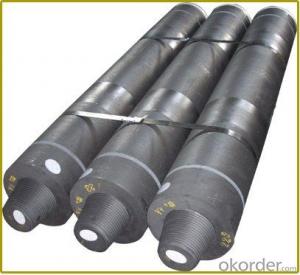It’s an exciting time to be in the world of metallurgy, and I’m not just saying that because I’m a self-proclaimed metal-geek. The introduction of Graphite Felt Electrodes has opened up a whole new frontier in the industry, and it’s something that’s got me, and many others, pretty stoked. Let’s dive right in, shall we?
Graphite Felt Electrodes, or GFEs, are a game-changer in the world of electric arc furnaces (EAFs). These furnaces are used to melt down scrap metal and turn it into something new, something useful. But the process isn’t just about heating things up; it’s about efficiency, sustainability, and pushing the boundaries of what’s possible. And that’s where GFEs come in.
GFEs are made from a blend of needle coke, pitch, and other materials that are combined, molded, and then baked at high temperatures. The result is a versatile, high-performance electrode that’s got some serious potential. They’re designed to be more durable, more energy-efficient, and more environmentally friendly than traditional graphite electrodes. And that’s a big deal in a world that’s increasingly focused on sustainability and reducing our carbon footprint.
But what makes GFEs so special? Well, for starters, they’re made from a unique material that’s both flexible and strong. This means they can handle the rigors of the EAF process without breaking down or losing their shape. And because they’re less likely to crack or break, they last longer, reducing the need for frequent replacements and minimizing waste.
Another cool thing about GFEs is their ability to conduct electricity. They’re excellent conductors, which means they can transfer heat more efficiently to the scrap metal, speeding up the melting process. This not only saves time but also reduces energy consumption, which is a win for both the company and the environment.
And let’s not forget about the environmental benefits. Traditional graphite electrodes can release harmful emissions during the EAF process, but GFEs are designed to minimize these emissions. They’re made from more sustainable materials and are less likely to contribute to air pollution. This is a huge step forward in making the metallurgical industry more eco-friendly.
But the real magic happens when you start to think about the potential applications of GFEs. They’re not just limited to EAFs; they can also be used in other industrial processes that require high temperatures and efficient energy transfer. From foundries to steel mills, GFEs are poised to make a big impact.
Now, I know what you might be thinking: ‘This all sounds great, but how do I know these electrodes are really as good as they claim to be?’ Well, let me tell you, the proof is in the pudding. Several companies have already started using GFEs in their operations, and the results have been nothing short of impressive. They’ve seen significant improvements in efficiency, reduced downtime, and a decrease in their overall environmental impact.
One company that’s been making waves with their use of GFEs is ArcelorMittal. They’ve reported a 15% increase in furnace efficiency and a 20% reduction in energy consumption since making the switch. That’s a pretty significant saving, and it’s just the tip of the iceberg when it comes to the potential benefits of GFEs.
But it’s not just about the big players; smaller companies are also getting in on the action. GFEs offer a unique opportunity for smaller operations to compete with larger ones by adopting more efficient and sustainable practices. This is a game-changer for the industry, leveling the playing field and encouraging innovation at all levels.
So, what does the future hold for Graphite Felt Electrodes? It’s hard to say for sure, but one thing’s for certain: they’re here to stay. As the demand for sustainable and efficient industrial processes continues to grow, GFEs are poised to play a crucial role in shaping the future of the metallurgical industry.
In conclusion, the introduction of Graphite Felt Electrodes is more than just a new product; it’s a new way of thinking about how we approach metal production. It’s about pushing the boundaries, being more efficient, and making a positive impact on the environment. And that’s something that’s worth getting excited about. So, let’s embrace this new frontier and see where it takes us!

